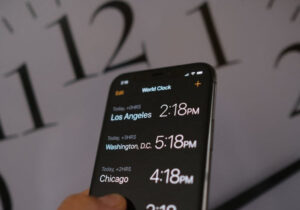For vinyl enthusiasts, there’s nothing quite like the thrill of finding a rare and valuable record while flipping through crates at a local record shop or estate sale. But how can you tell if a record is truly worth something? While some records might have obvious historical or cultural significance, others may appear unassuming yet hold considerable value due to their rarity, condition, or unique features.
According to music experts and collectors, identifying rare and valuable vinyl records requires a keen eye, some background knowledge, and a bit of patience. Whether you’re a seasoned collector or a curious newcomer, here are the key factors to consider the next time you’re on the hunt for vinyl treasures.
Check the Record Label and Pressing Information
One of the first steps in determining a record’s rarity is to examine the record label and pressing information. These details can reveal a lot about the record’s origin, production run, and potential value.
First Pressings
First pressings are often more valuable than subsequent reissues, as they represent the initial run of an album’s release. Look for clues like catalog numbers, matrix numbers, and label designs to confirm if a record is a first pressing. For example:
•Labels like Blue Note, Chess, and Sun Records are known for producing valuable first pressings.
•Early pressings of albums by iconic bands like The Beatles or The Rolling Stones often command higher prices.
Limited Editions
Records released in limited quantities or for special events, such as Record Store Day exclusives, are often more valuable. Limited edition pressings may include unique cover art, colored vinyl, or bonus content.
Promotional Copies
Promotional (promo) copies were sent to radio stations and industry professionals before an album’s official release. These copies are usually marked with “Not for Sale” or “Promotional Use Only” and can be highly sought after by collectors.
Inspect the Condition of the Record and Sleeve
Condition is critical when determining a vinyl record’s value. Collectors typically use a grading system to assess the condition of both the record and its sleeve.
Vinyl Condition
•Mint (M): Perfect, like-new condition with no visible defects.
•Near Mint (NM): Almost flawless, with minimal signs of handling.
•Very Good Plus (VG+): Light surface marks or minor imperfections that don’t affect play.
•Very Good (VG): Noticeable wear, but still playable without skipping.
•Good (G) or Fair (F): Significant wear and potential playback issues.
Sleeve Condition
The record sleeve can also affect value. Look for clean artwork, intact seams, and minimal wear. Albums with original inserts, lyric sheets, or posters are more valuable. Special features like gatefold covers or embossed designs can add to the record’s appeal.
Identify Rare or Misprinted Features
Misprints
Misprinted records are often considered collector’s items because they represent manufacturing errors. Examples include:
•Incorrect or missing labels.
•Cover art with typos or design flaws.
•Albums with the wrong tracks listed on the sleeve.
Unique Packaging
Some records have rare packaging elements that make them stand out. For example:
•The original “butcher cover” of The Beatles’ Yesterday and Today is one of the most famous rare album covers.
•David Bowie’s The Rise and Fall of Ziggy Stardust first pressing featured a unique lyric sheet insert.
Research Market Demand and Artist Popularity
Not every rare record is valuable—demand plays a significant role. Albums by influential or iconic artists are more likely to retain or increase in value over time.
Cult Favorites and Niche Genres
Records by artists with smaller but devoted fanbases can also command high prices. Genres like psychedelic rock, obscure jazz, and early punk are particularly sought after by collectors.
Cultural and Historical Significance
Albums associated with cultural movements or pivotal moments in music history often carry higher value. For example:
•Original pressings of The Velvet Underground & Nico (with the iconic banana cover) are highly prized.
•Records from the early hip-hop era, such as Grandmaster Flash’s The Message, are considered historic artifacts.
Look for Autographs or Personalizations
Autographed records can be extremely valuable, especially if the signature is from a legendary artist or band. However, authenticity is crucial. Always verify autographs with reputable sources, as forgeries can devalue a record.
Personalized autographs may be less valuable to general collectors but can still hold sentimental or niche value.
Rare Vinyl Formats and Features
Certain vinyl formats or features are inherently rare and can boost a record’s value:
•Colored Vinyl: Unique colors or patterns, like splatter or marbled vinyl, are often limited editions.
•Picture Discs: Vinyl with images pressed into the surface can be collector’s items, though they’re not always high-quality for playback.
•7-inch and 10-inch Records: Singles and EPs from legendary bands or rare genres can be worth significant amounts.
Learn to Use Online Resources and Tools
Discogs
Discogs is a treasure trove of information for vinyl collectors. Use the platform to:
•Check the catalog number and pressing details of a record.
•Compare prices based on condition and rarity.
•Browse user reviews and collector insights.
eBay and Auction Sites
Online marketplaces can help gauge the current market value of a record. Pay attention to completed sales rather than asking prices to get an accurate sense of demand.
Network with Fellow Collectors and Experts
Building connections with other vinyl enthusiasts is invaluable for gaining knowledge and spotting rare finds. Join local record collector groups, attend vinyl fairs, and participate in online forums to exchange insights and tips.
Pay Attention to Regional and International Pressings
Regional pressings or international editions can be rarer than standard releases. For example:
•Japanese pressings are highly regarded for their sound quality and unique packaging.
•Records released in limited markets (e.g., South America or Eastern Europe) may be harder to find.
Trust Your Instincts and Enjoy the Hunt
Ultimately, collecting vinyl is as much about personal enjoyment as it is about value. Trust your instincts, explore diverse genres, and let your passion guide your journey. While not every record you find will be a hidden gem, the thrill of discovery is what makes vinyl collecting such a rewarding hobby.
Thoughts in Final
Identifying rare and valuable vinyl records is both an art and a science. By paying attention to pressing details, condition, unique features, and market demand, you can spot treasures that others might overlook. Whether you’re looking to build a personal collection or invest in records with resale potential, these expert tips will help you navigate the exciting world of vinyl collecting.
So, the next time you’re digging through crates, keep your eyes peeled for those hidden gems—you never know when you might stumble upon a record that’s worth its weight in gold.
No comments yet.







